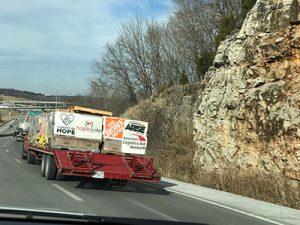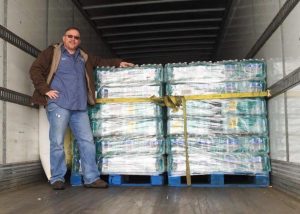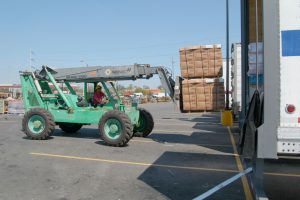Have you ever been to a white elephant party?
Much like the popular Dirty Santa game, it involves everyone bringing wrapped packages that will be opened, “stolen” and eventually taken home by individual party guests. Only instead of newly purchased items, the packages contain recent Christmas or Hanukkah gifts that their owners don’t want or need.
The funny thing about these gatherings is that most people don’t have to think very hard about what they’re going to bring. After all, haven’t most of us received at least one “what were they thinking?” gift from well-meaning friends or relatives? (I’m talking to you, Christmas cuckoo clock!)
Here in the non-profit space, we have our own version of white elephants, except in our case these pale pachyderms aren’t unloved holiday gifts. They’re the unsolicited product donations that pour in after a disaster.
So why, exactly, are these donations considered to be white elephants?
It’s not necessarily because they’re the wrong color/size/flavor etc., although sometimes that might be true. Nor is it because the donated items wouldn’t be useful to some disaster survivors, somewhere.
Instead it’s because disaster relief organizations and other non-profits:
- May already have a surplus of the kinds of products that have been collected, at least for the time being
- Might not have the capacity to store, transport or offload the newly donated products
- May lack the time and manpower to process unsolicited product donations while they’re in crisis mode
- Usually already have a better, more efficient way of procuring and getting the same kinds of products to disaster survivors more quickly
I could go on. But you get the idea. Besides, ALAN’s executive director Kathy Fulton did a good job of touching on all of these points and more in a July 2022 blog, which I highly encourage you to read.
The question is, how can we change the way we give so that we can nip this counterproductive giving practice in the bud?
First, consider taking a page from smart holiday shoppers’ books: Ask your potential giftees – aka non-profits – what they actually need. Or go to their websites to see if they have a list of open requests (a la the one on ALAN’s Disaster Micro-site). It will go a long way toward ensuring your gifts wind up in disaster survivors’ hands rather than a landfill.
Second, don’t assume you have to make a product contribution immediately. Unlike the people on your holiday lists – who really should receive their gifts before December 25th or the eighth night of Hanukkah – disaster relief organizations need your help 365 days a year, not just right after a disaster. In fact, some of the things they’ll need to help survivors (like building supplies) may be required months or years down the line.
Finally, think about giving the one gift that every non-profit is always happy to see: money. Humanitarian organizations really do find these gifts to be the most helpful, because they can use these monetary contributions to purchase exactly what’s needed for disaster survivors exactly when it’s needed – often much closer to the disaster site (so that help can arrive sooner) and at a much better price.
On behalf of all of us at ALAN, here’s wishing all of you a very happy start to your 2023. Just as important, here’s hoping that you steer clear of any white elephant party I’m going to in the near future – unless, of course, you wouldn’t mind going home with my Christmas cuckoo clock.
Lori Lockman
Communications Director
American Logistics Aid Network





